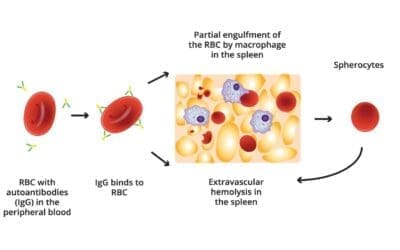Homocysteine is an amino acid linked to an increased risk of heart disease. Elevated levels can be influenced by genetics, diet, and lifestyle.
Vitamin B12 Test: The Essentials
Feeling tired? Check your vitamin B12 levels with a simple blood test. Order your test online today and boost your energy!
Essentials of Folate Blood Test
A folate blood test measures the amount of folate in your blood. Folate is crucial for pregnancy health and overall well-being. Schedule your test today.

Hemoglobinuria: Overview and Causes
Hemoglobinuria: Red urine from free hemoglobin, not whole RBCs. Signals serious issues like hemolysis. Prompt diagnosis is vital.

Hematuria (Blood in Urine): Overview & Causes
Hematuria: Blood in urine, gross (visible) or microscopic. Could signal infection, stones, or more serious issues.

Evans Syndrome
Evans syndrome: Rare autoimmune disorder causing low red blood cells & platelets (AIHA & ITP). Can lead to fatigue, bruising, and bleeding.
Abnormal Red Blood Cell Morphology
Red blood cell (RBC) shapes and sizes offer clues to health! Normal RBCs are round and disc-shaped, but abnormal shapes like sickle or teardrop forms can indicate underlying conditions like anemia. Let’s explore what these variations mean!
Drug-Induced Immune Hemolytic Anemia (DIIHA)
Drug-induced immune hemolytic anemia (DIIHA) challenges diagnostic workup due to diverse mechanisms (hapten model most common). Consider DIIHA in hemolytic anemia with recent medication initiation & positive DAT.
Autoimmune Hemolytic Anemia (AIHA)
AIHA: When your own immune system attacks healthy red blood cells, causing anemia. Treatment aims to suppress this immune response
Hemolytic Anemia
Hemolytic anemia occurs when red blood cells are destroyed faster than they’re produced, leading to fatigue, weakness, and shortness of breath.
Agarose Gel Electrophoresis Preparation for PCR
Agarose gel electrophoresis: where we separate and visualize amplified DNA fragments.
Sickle Cell Disease Test
Explore the Sickle Cell Disease Test: a vital lab protocol for detecting sickle cell disease. Learn its principle, procedure, and result interpretation.





